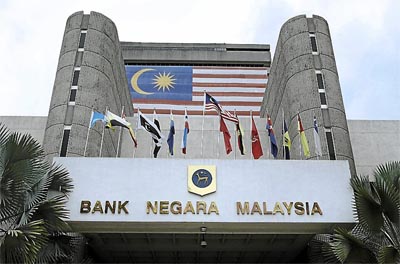PETALING JAYA: Bank Negara is studying the risks arising from the developer interest-bearing scheme (DIBS) with a view of potentially imposing curbs on it, sources said.
Although it is unclear if or when such curbs would be put in place, Hong Leong Investment Bank (HLIB) said that it may be “later this week”, adding that such a move would be a negative for future sales in the primary property market.
Other industry players think that the measures might be introduced in the second half of the year.
DIBS has become a popular easy financing package offered by property developers in joint-promotion activities with banks in recent years.
Under the scheme, buyers need not fork out much initial downpayment to buy properties, as the developer supposedly absorbs the initial interest. This is until the buyer takes possession of the property.
A high number of buyers enter this scheme with the intention of flipping the property when they gain possession of it, making a profit without having to come up with much capital in the process. Such a scenario fuels speculation.
“Typically, under the scheme, buyers only foot between 5% and 10% of the house price upon signing the sale and purchase (S&P) agreement and only begin payment when the project is completed,” a property consultant told StarBiz.
“There are caveats to this scheme, as buyers commit to a financial obligation upon the signing of the S&P and the interest cost has actually been already passed on to buyers via the higher selling prices.”
DIBS is mainly offered to the high-rise residential segment. Some property consultants have opined that the presence of DIBS in the market has caused prices to be set on an artificially higher trajectory.
Notably, the Singapore government banned DIBS in 2009.
“While the exact measures are yet to be revealed, we believe the curbs would impact this easy financing scheme,” HLIB said in a note yesterday.
According to analysts, most of the sales in the recent property bull cycle were tied to the attractive DIBS scheme at the expense of the secondary property market which has remained sluggish. And given the persistent rise in household debt, the Government is mulling over measures to limit it.
“In the recent past, Bank Negara has been compiling information on the scheme and studying its impact on the sector,” a source said.
Bank Negara had yet to respond to StarBiz’s queries as at press time.
“The difference between the non-DIBS and DIBS pricing can range from as low as 5% to as high as 30% if other incentives like early-bird discounts, stamp duty waivers and cash payments are taken into account,” said Elvin Fernandez, managing director of Khong & Jaafar group of companies.
He advocates regulators to compel developers to be transparent on the various incentives, as it may be difficult to do away with DIBS packages.
“Developers should inform buyers and bankers of the actual value of the discounts they are getting so that house buyers know the true value of the house they are buying,” he said.
UOB Kay Hian Research noted that new launches in selective high-rise projects in the suburbs of the Klang Valley were transacted at over RM1,000 per sq ft (psf) vis-a-vis RM450 psf two years ago.
“Household debt has risen to 80.5% of nominal gross domestic product as at end-December 2012, up from 60.4% as at end-2008.
“We also note that outstanding banking sector loans in the household sector has risen 3.6% year-to-date as at end-April to RM638.5bil from RM616.5bil as at December 2012. As the rise in consumer credit is partly linked to housing, curbs may be introduced to dampen speculation,” UOB Kay Hian said in a report yesterday.
On the financial impact of curbing DIBS on property companies, HLIB said that it would be “negative for future sales in the primary market but the extent of damage varies with the degree of exposure to the high-rise segment for each individual developer”.
UOB Kay Hian reckons that if DIBS or similar schemes were to be tightened, it could “significantly dampen new property launches as speculators will be filtered out”.
The company also does not rule out the possibility of a further upward revision in real properties gains tax (RPGT) to dampen speculation.
In Budget 2013, the Government had raised the RPGT for the second time since 2011, stipulating a 10% to 15% tax for the disposal of properties within two years of purchase, and 5% to 10% for the disposal of properties within three to five years. However, properties sold five years after purchase are exempted from the RPGT.
Source The Star, 25 June 2013
